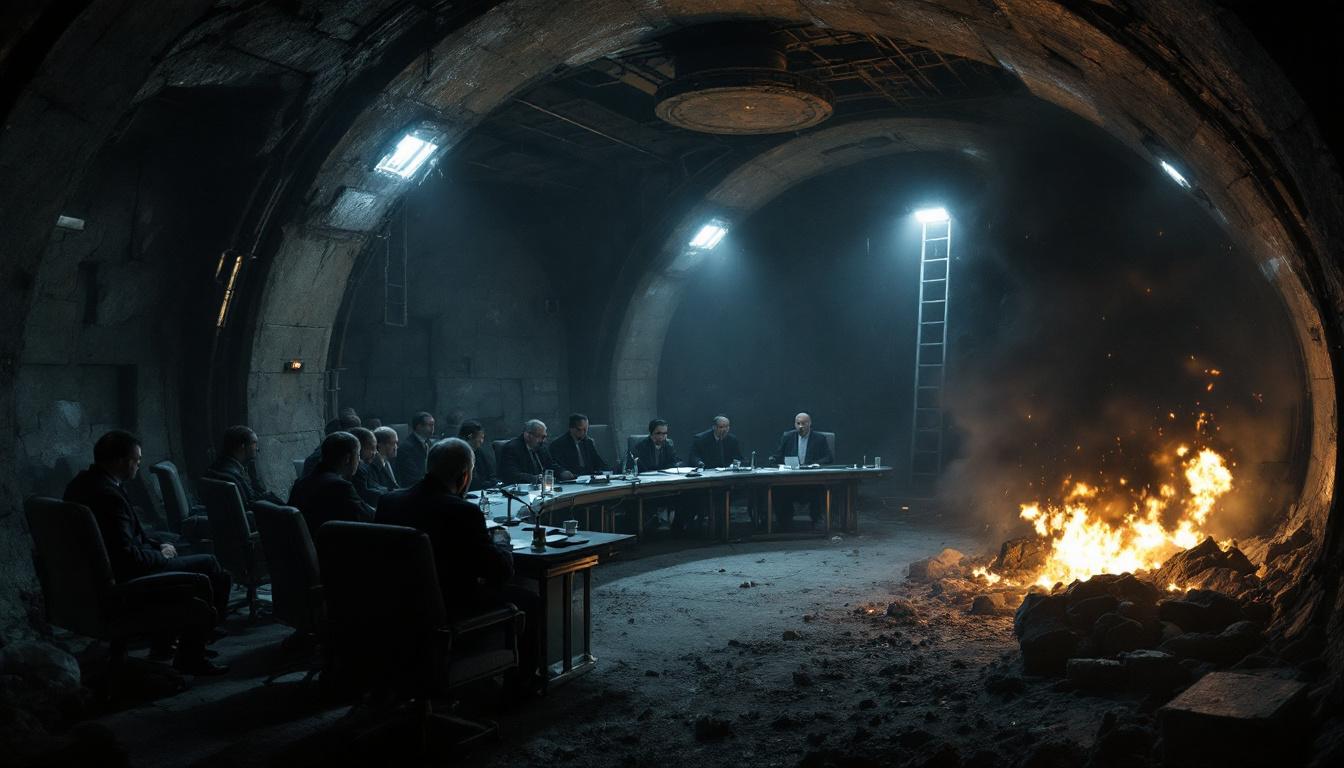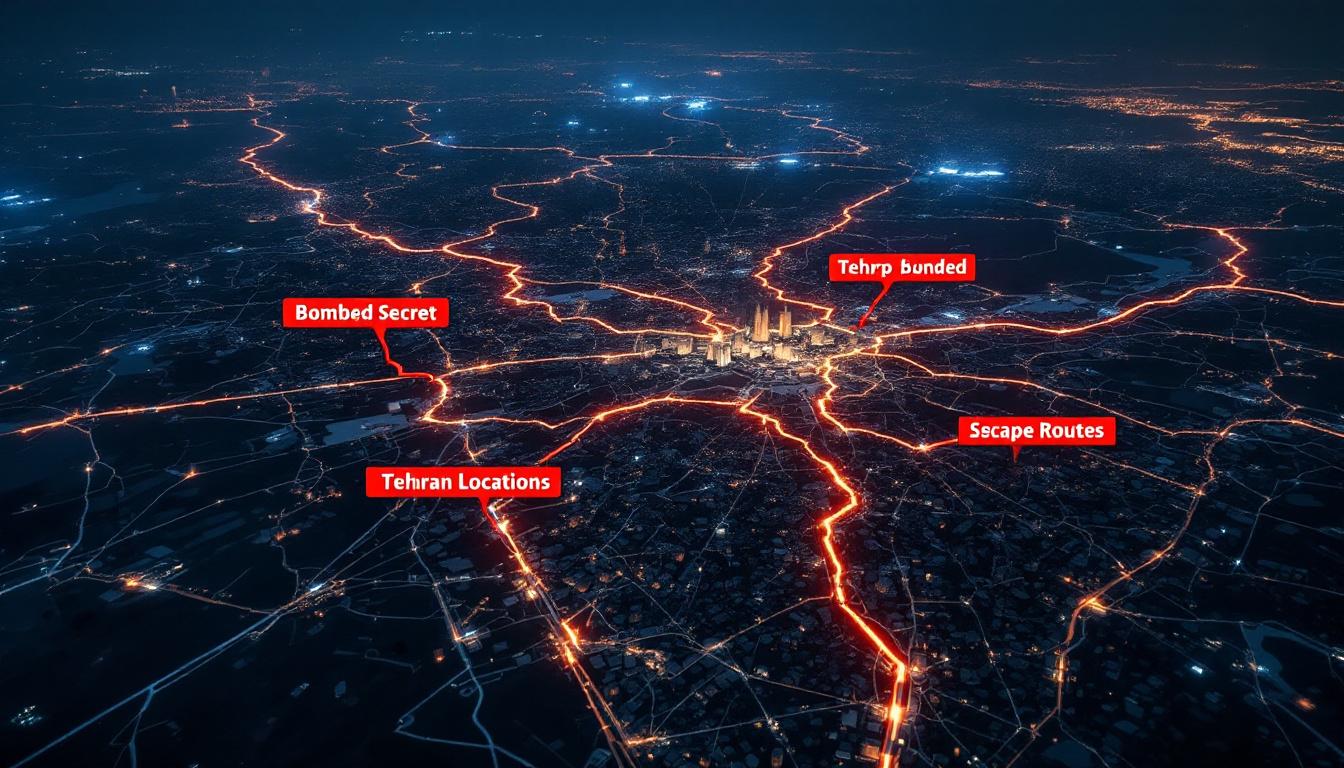A dramatic story has emerged from Iran involving its new President, Masoud Pezeshkian, and a series of reported Israeli strikes. According to state-linked media, President Pezeshkian was slightly injured as bombs targeted a hidden underground facility in Tehran, where he and top officials were holding an emergency meeting. The real events—and their meaning—are complex, personal, and reveal the high stakes faced by leaders in moments of war.
Let’s look closer at what happened, what it means for both Iran and Israel, and how these events impact the region and the world.
The Night of the Strikes—President in Peril
On June 16, 2025, Tehran was under intense pressure. In the early days of a new conflict, Israel launched several powerful strikes. Their targets included a secret underground facility hidden in the mountains near Iran’s capital. Iran’s President, Masoud Pezeshkian, was inside—attending a high-level emergency meeting with the Supreme National Security Council, the team that manages Iran’s most sensitive security decisions.
Suddenly, six bombs exploded, hitting entry points and escape routes of the facility. The place went dark—electricity cut, vents blocked. In the chaos, President Pezeshkian and others scrambled for an emergency shaft. He reportedly suffered leg wounds as they climbed to safety.
Fallout: Who Was Targeted, and Why?
Israel did not officially comment on the event, and Iran’s Fars news agency is the main source. But according to these reports, the strike blocked every escape and cut off the air supply, aiming to trap top Iranian leaders. Iran suspects infiltration—leads trace back to possible Israeli agents providing intelligence about leaders’ exact locations.
The Supreme National Security Council, which Pezeshkian attended, is Iran’s top decision-making body after the Supreme Leader, Ali Khamenei. If something happened to those present, it could change the entire leadership at a critical time.
A week later, Pezeshkian openly accused Israel of trying to kill him. Israel denied this, saying regime change was not their goal, but admitted targeting Iran’s military and intelligence structure, including the head of state.
The Bigger Stakes: Nuclear Security and Global Tensions
What sparked this explosive night? Days before, on June 13, Israel surprised Iran with attacks on several nuclear and military sites. Israel claimed these actions were to prevent Iran from developing nuclear weapons. Iran, in turn, launched aerial attacks against Israel, while continuing to insist its nuclear program is peaceful.
Israel’s first wave wiped out top commanders in Iran’s Revolutionary Guard and armed forces, catching Iran’s leadership completely off-guard. The shock led to a decision-making “paralysis”—for 24 hours, Iranian leaders were unsure how to respond.
Intelligence questions hang over the entire episode—how did Israel know the precise locations of secret facilities and top leaders? Reports say even Iran’s Supreme Leader, Ayatollah Khamenei, was targeted, but evaded the strike by moving to a hidden, secure site.
World Response: US Airstrikes, International Reactions
Days after the Iranian underground attack, the United States got directly involved. On June 22, US Air Force and Navy struck three Iranian nuclear sites, aiming to destroy or degrade Iran’s atomic capabilities. US President Donald Trump later claimed the operation “obliterated” these facilities—though US intelligence disagrees on just how much damage was done.
The attacks, counter-attacks, and near-captures of top leaders highlight how suddenly conflict in the Middle East can reach the edge of disaster.
Human Impact—Leaders Are People Too
While global headlines focus on strategy and weapons, stories like Pezeshkian’s remind us of the human side of world crises. Inside that dark bunker, with concrete cracking and alarms blaring, real people—leaders or not—felt afraid, wounded, and driven to survive.
Pezeshkian, newly elected, had to act fast under pressure. Escaping through an emergency shaft, hurt yet determined, reveals a side of political leadership that is rarely seen but deeply human.
What’s Next? Unanswered Questions and Lasting Lessons
There is still much we do not know:
- Was Iran’s President truly at risk of assassination, or was he caught in a wider attack?
- How much did intelligence leaks impact the outcome?
- What stops another sudden strike from changing the future overnight?
Current uncertainty will shape security planning, diplomacy, and public trust for years.
Conclusion
President Pezeshkian’s reported injury in Israeli strikes paints a dramatic, very human picture of modern conflict. Even the most guarded leaders face real danger—sometimes with only moments to escape. As tensions between Iran, Israel, and global powers continue, the world waits anxiously for peace to return, and for leaders everywhere to remember both duty and the frailty of life.
To contact us click Here .



